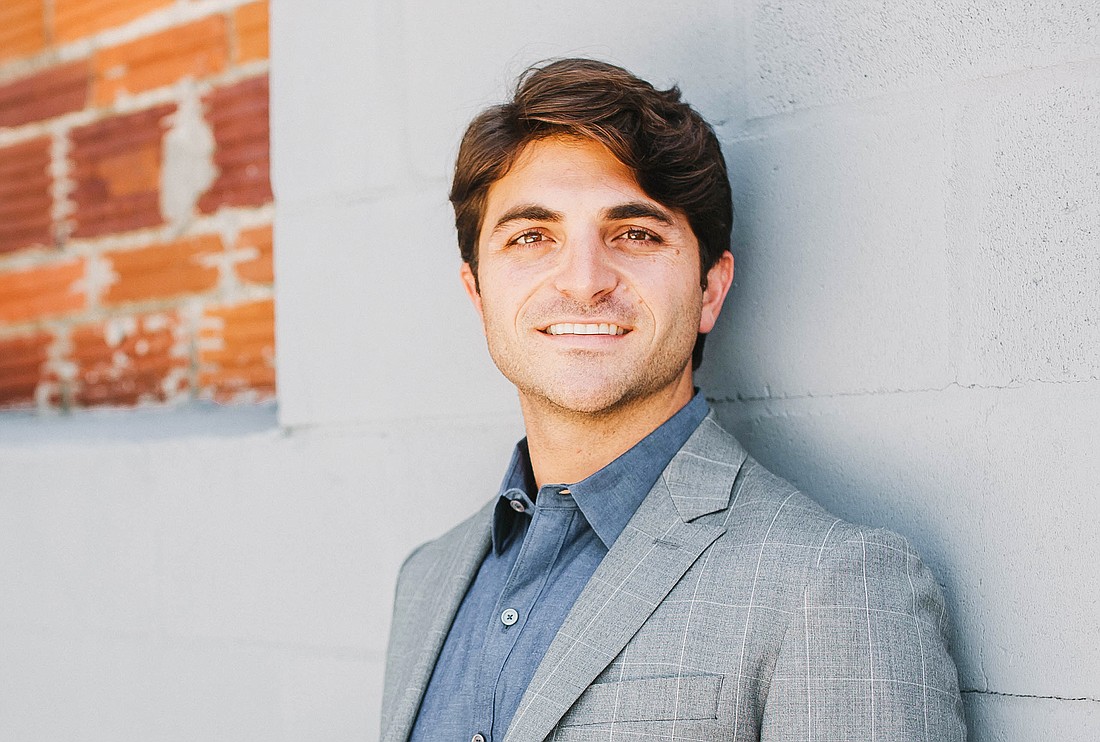
Petra Vice President Elias Hionides said he hopes a proposed rewrite of the city’s incentives policy for Downtown historic landmark restoration could have benefits beyond filling empty buildings.
“I think there are a number of factors to consider,” Hionides said. “Increasing the tax base is one, not just property tax but the sales tax these businesses generate once they’re occupied. I think that it helps drive investment in Jacksonville as a whole, not just Downtown.”
Ordinance 2020-0527, which is making its way through City Council, would eliminate a $1 million cap on taxpayer-backed forgivable loans for renovating historic and aging Downtown buildings. It also would help pay to bring those buildings up to code.
The Downtown Investment Authority approved the plan in July.
Buildings that contribute to the federal Downtown Jacksonville Historic District and are designated historic by Council would qualify for more incentives than nonhistoric structures.
The plan keeps the existing Downtown Historic Preservation and Revitalization Trust Fund for grants under $100,000.
Those incentives could be approved by the DIA without Council approval.
Hionides said this would make smaller projects, like Petra’s Ruby Beach Brewing Co. renovation on Forsyth Street, easier to complete.
“If we don’t have to go to City Council, that’s a huge benefit to be able to say, ‘Hey, I have a building and I have a tenant who wants to move in. I have a $50,000 sprinkler system that’s causing the deal to not work and it’s going to fill a vacant retail storefront or a historic building,’” he said.
“That is a hole that’s been missing from DIA incentives for a long time.”
ACE JAX LLC, managed by Hionides, could benefit from the redrafted policy.
Hionides and ACE JAX co-manager Christian Allen of Atlantic Beach plan to transform the vacant seven-story Jones Bros. Furniture building at 502 N. Hogan St. into 28 apartments, 10,247 square feet of retail or restaurant space and a 1,040-square-foot office.
The city awarded the developer a redevelopment agreement in February 2019 with a financial incentives package of up to $2.3 million for the estimated $11.1 million renovation.
DIA CEO Lori Boyer said by email Aug. 29 the Jones Bros. adaptive reuse is one of several projects that prompted the incentives revamp.
Boyer told Hionides in a March 30 letter there were concerns about the project’s financial viability, but she expects it could be feasible if Council approves the Downtown Preservation and Revitalization program.
“If approved, I expect we may see a new application that would allow the project to move forward,” Boyer said Aug. 29.
The amended bill could be debated by the Council Finance and Rules committees Oct. 6 and reach full Council for a final vote Oct. 13.
Andrew Sodl and Thomas Ingram of the Downtown-based commercial real estate law firm Sodl & Ingram said Aug. 7 there is an opportunity to interest more developers in restoring historic Downtown buildings despite the impact of COVID-19 on the market.
Ingram said he thinks it will require a larger city government investment.
He points to the $6.16 million, multiyear renovation of Cowford Chophouse at 101 E. Bay St. as an example of adaptive reuse that’s been successful, but expensive.
“That was, I would say, mostly a public service of the owner and developer. That was a huge investment on (the developer’s) part and wonderful for the city,” Ingram said.
“A project with that level of involvement where you’re taking down the bricks and numbering them so that you have to put them back in the same order is just a very huge investment for your typical project.”
The attorneys said the DIA plan could make historic and aging building restoration as attractive as new construction, which Sodl said can often be less expensive than adaptive reuse projects.
Sodl said developers can go into a historic renovation and think they “have their arms wrapped around” all financial and structural challenges.
“But there’s always the potential that more needs to be done or cost overruns are more likely to occur,” he said. “And I think that coupled with the headwinds we’re feeling now in development, generally due to uncertainly in the market with COVID and what development looks like for the next six to 12 months, I think the program is certainly a good start.”
Two Council committees deferred the bill Sept. 14 after the DIA’s Council liaison, LeAnna Cumber, asked to streamline its language and reduce the program’s forgivable loan periods from 10 to 5 years for developers who used more than one program incentive.
“If I’m a developer, if I have all these amortization periods, it could be a nightmare that I don’t want to bother with,” Cumber said. “On the city side, we don’t want to create programs that have so many different components that it becomes cumbersome to manage.”
Cumber represents District 5, which includes the Downtown Southbank.
She said Sept. 29 that the DIA’s plan puts in place more checks and balances than the current incentive structure.
Cumber said when Council waives the $1 million grant cap in the current program, lawmakers have no other mechanism to control the city’s return on investment.
The Council member said she thinks the loan types in the revamped program restore layers of taxpayer control.
“My goal is to make it attractive enough to developers that they’ll actually use it but that we get — we being the city — get a return on investment,” Cumber said.